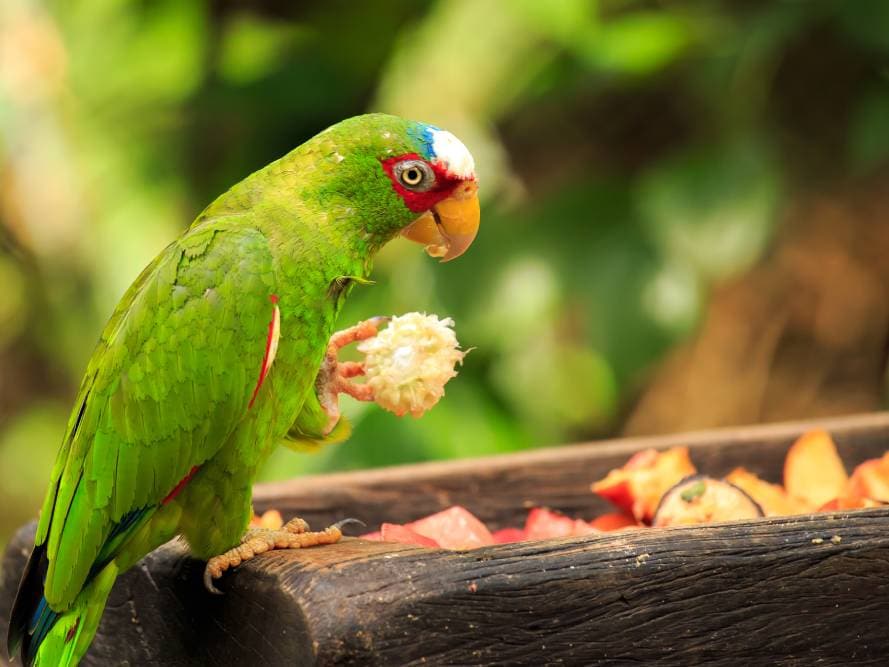
Click to Skip Ahead
If you’re new to bird ownership, you’ve probably wondered, “What do pet birds eat?” on more than one occasion. You might think the answer is obvious: seeds! It’s what we feed the birds in our backyard, so it’s a no-brainer, right? Wrong.
Feeding wild birds is a bit different than feeding a companion bird that spends its time indoors. Your pet will have a limited variety of food at its disposal compared to its wild counterparts. Birds in the wild will eat various foods like grass, flowers, insects, nuts, seeds, and more. There really is no limit to what a wild bird will eat, and when the seasons change, they will gorge themselves on foods they had forgotten about.
Like its wild counterparts, your pet bird will eat whatever is available, but you’re responsible for providing the balanced and natural foods it needs. If you’re feeling a bit overwhelmed with all the information out there, we can help. Come along with us as we take a closer look at the components of a healthy diet for your pet bird.
Pellets
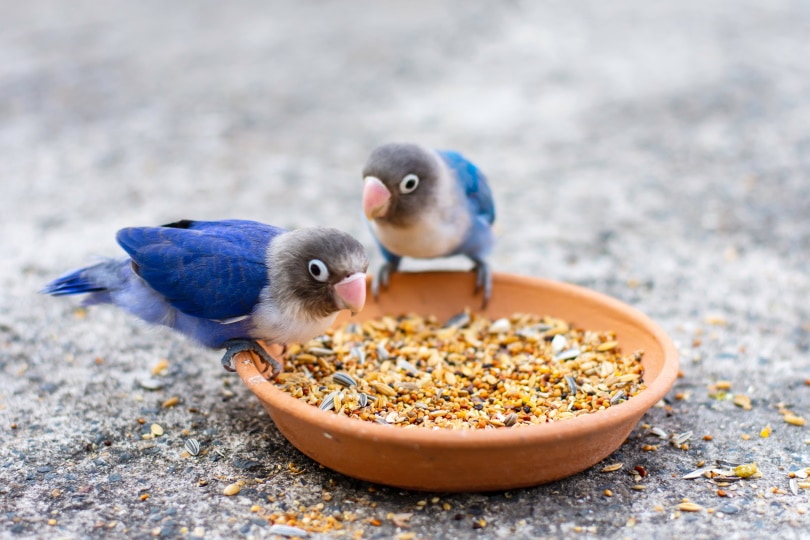
Pellets are the perfect staple food for any companion bird. These pellets provide a balanced and nutritionally complete food, but not all are created equally. Some of the poorer quality options are chock full of artificial coloring and ingredients with little to no nutritional value.
Pellets contain various foods like vegetables, fruit, grains, and seeds. They are often fortified with vitamins and minerals your bird needs to thrive. As well-balanced as pellets may be, they do not provide the variety, and stimulation companion birds crave. Just as you wouldn’t enjoy eating the same thing day after day, neither does your bird. That’s why you need to incorporate other foods into its diet, like vegetables and fruits.
The right pellets for your bird will depend on its species. In addition, they come in many shapes and sizes, so you may need to experiment a bit to find the perfect option for your bird. Some popular pellet brands include Kaytee, ZuPreem, and Lafeber.
Vegetables
Vegetables are another vital component of your pet bird’s diet. Dark and leafy greens pack the biggest nutritional punch and are the best option to offer your bird. In addition, bright yellow, red, and orange veggies like peppers, carrots, sweet potatoes, and squash provide a great dose of vitamin A, a nutrient critical for your bird’s diet. Other great veggies include broccoli, zucchini, snow peas, cucumbers, and romaine lettuce.
Frozen, thawed, or canned vegetables are acceptable, but the fresher the produce, the better. Remember that cooking veggies can deplete some of their nutritional value, however.
Preparing Veggies for Your Bird
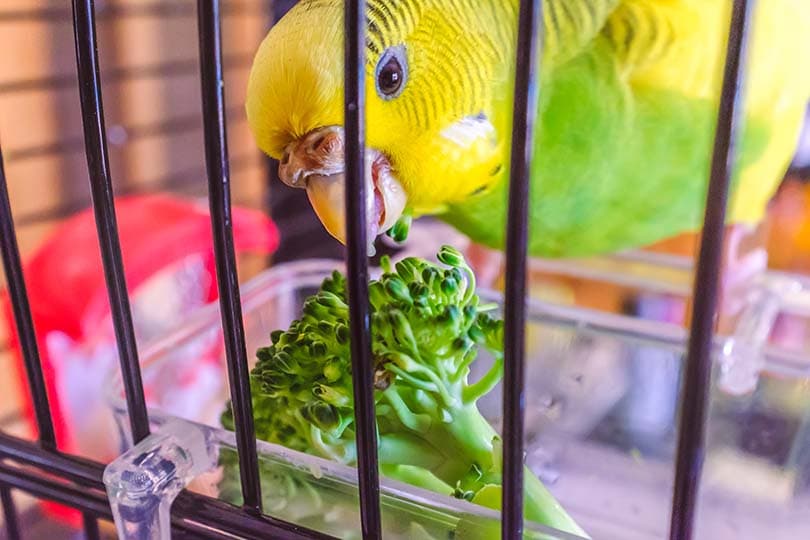
Cut your bird’s veggies into pieces appropriate for its size. You don’t need to chop them too small, however, as your bird will enjoy the challenge of chewing at slightly bigger pieces giving them the enrichment they need.
Canned produce may be packed with a lot of salt or sugar to preserve it. Ensure you’re rinsing any canned veggies before offering them to your pet.
To that end, all produce should be washed well. Birds are sensitive to pesticides and chemicals that farmers may use on their crops. Offer organic produce wherever possible.
Remove produce from your bird’s cage after a few hours to prevent it from attracting pests and growing bacteria.
Veggies to Avoid
Fruits
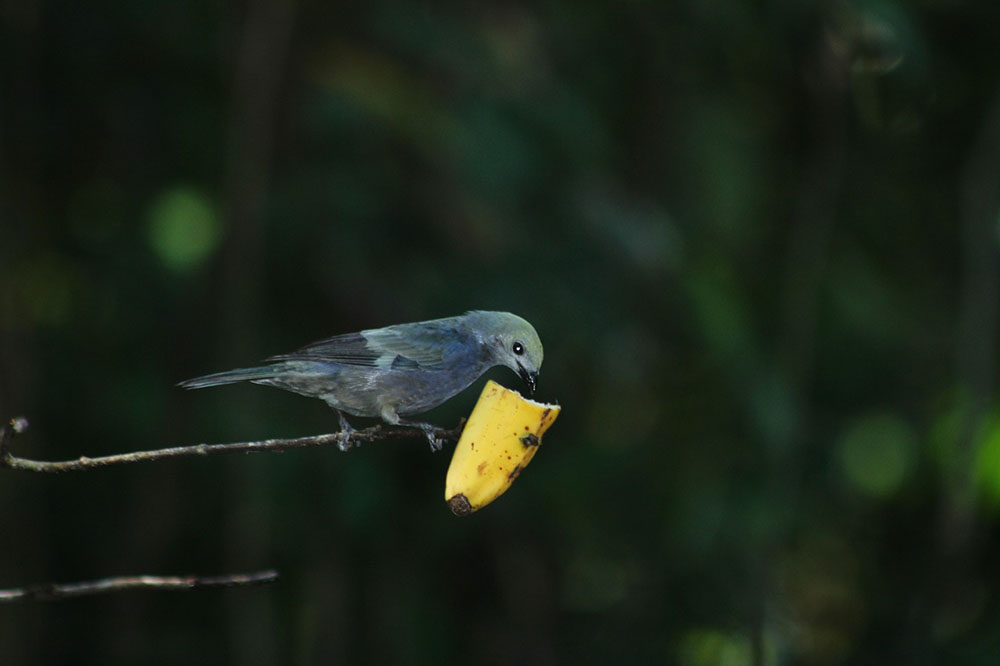
Fruit is a tasty treat for birds, but not something you need to offer very often or in large quantities. Fruit is high in sugar, so too much can cause obesity.
The best fruits include bananas, berries, melons, pineapples, oranges, and apples. Red, yellow, and orange fruits like mango, apricots, and grapefruit contain vitamin A, a nutrient your bird needs to boost its skin, feather, and eye health.
Preparing Fruit for Your Bird
As with veggies, all fruit must be thoroughly washed to remove any chemicals or pesticides used during the growing process. Cut fruit into appropriate pieces for your bird’s size.
Avoid offering frozen or canned fruit if possible. They often are loaded with artificial sugars and soaked in fructose-laden syrup.
Fruits to Avoid
 Seeds
Seeds
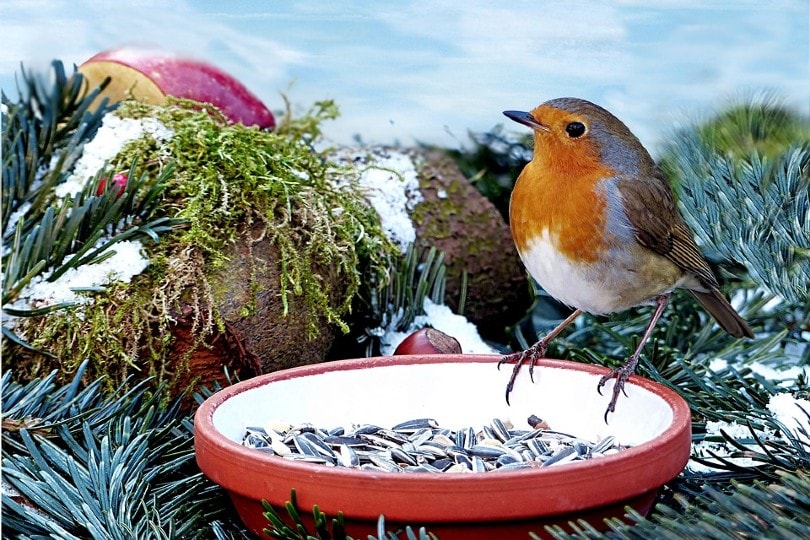
A common mistake new bird owners make is feeding their pets a seed-only diet. Since we provide the birds in our backyard with seeds, it must be true that a pet bird can also thrive on seeds, right? Wrong. You may offer your backyard bird seeds, but that’s only a tiny snippet of their diet. They will eat a wide variety of vegetation when they’re not hanging out at your feeders.
If you were only to offer your pet bird seeds, it would not be getting the nutrition it needs to thrive. A companion bird will become nutritionally imbalanced and lack the essential vitamins and minerals it needs to stay healthy if there is no variety in its diet. Not to mention the high-fat nature of seeds can lead to obesity, especially since pet birds do not get the same amount of exercise as their wild counterparts with the entire world at their wingtips.
Seeds are best used only as an occasional treat and should not be a staple in their diet or even offered every day. The fewer seeds you feed, the better, as once a bird has tasted seeds, it may protest its proper diet.
What Is Bird Chop?
If you have been researching the proper bird diet online for some time, you may have come across the term “bird chop.”
Chop refers to a finely chopped mix of both fresh and cooked foods, including vegetables, beans, and grains. It is a great way to trick your bird into trying new foods, as they’re all mixed with smells and flavors your bird already enjoys.
Preparing & Serving Chop

The great thing about bird chop is that it is entirely customizable to your bird’s tastes and what is currently in season. You can also make the chop in large batches and freeze it, so you always have a tasty meal on hand for your pet.
Only feed chop in small amounts. We’re talking teaspoons and tablespoons. Smaller birds like budgerigars can have one to two teaspoons, while larger birds like Cockatoos can have two to four tablespoons as a serving size.
Final Thoughts
A proper diet is essential for your bird’s quality of life. Pellets should be the biggest staple in your bird’s diet to ensure it’s getting the nutrients it needs. Vegetables are the healthiest produce option as they’re chock full of vitamins and minerals. Finally, fruit and seeds should comprise only a small part of your bird’s diet, and neither should be offered daily.
If you’re feeling in over your head with avian nutrition, we recommend speaking to your vet. They can provide the best diet guidelines for your bird’s species and size.
Featured Image Credit: Maciej Czakejewski, Shutterstock









